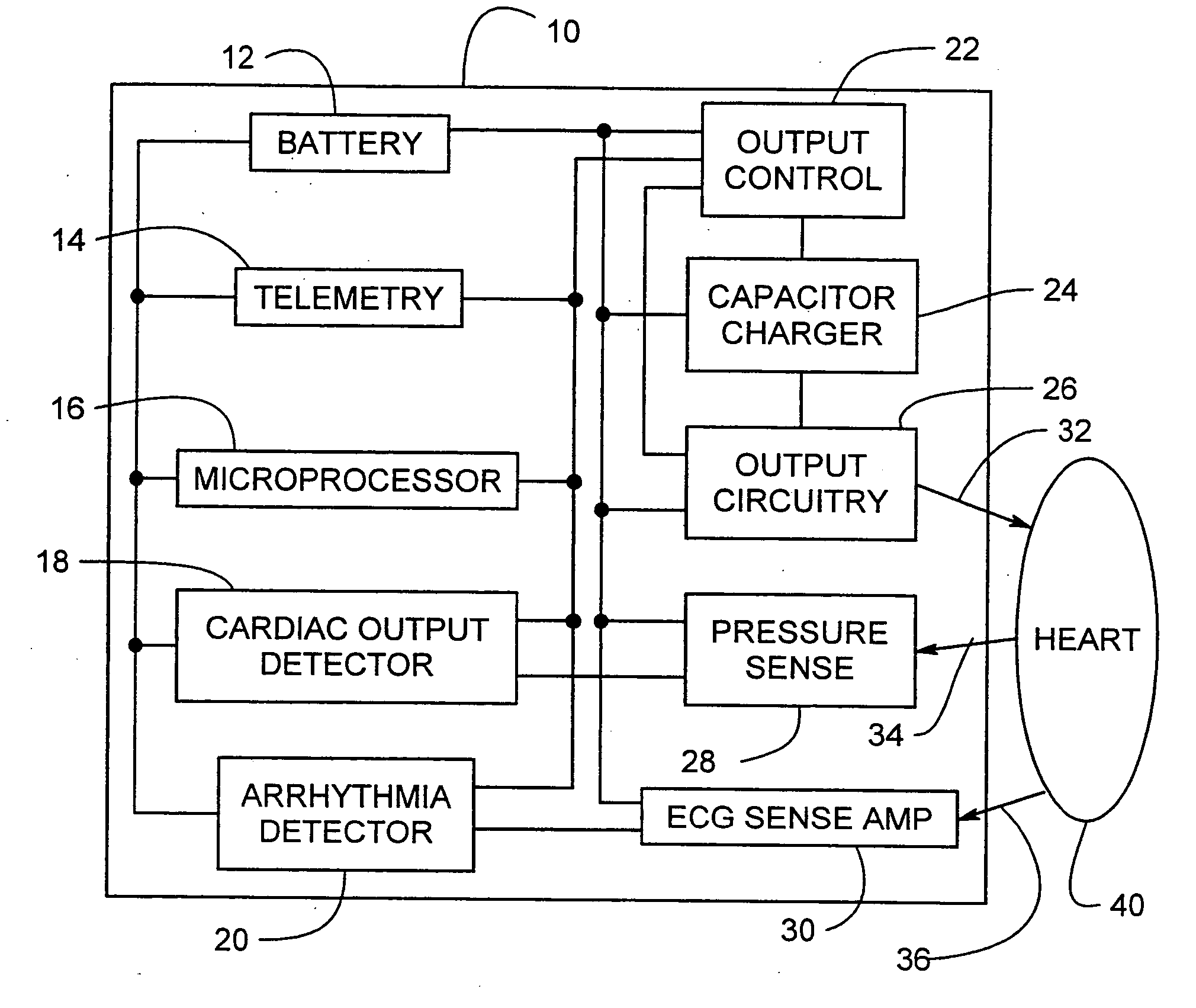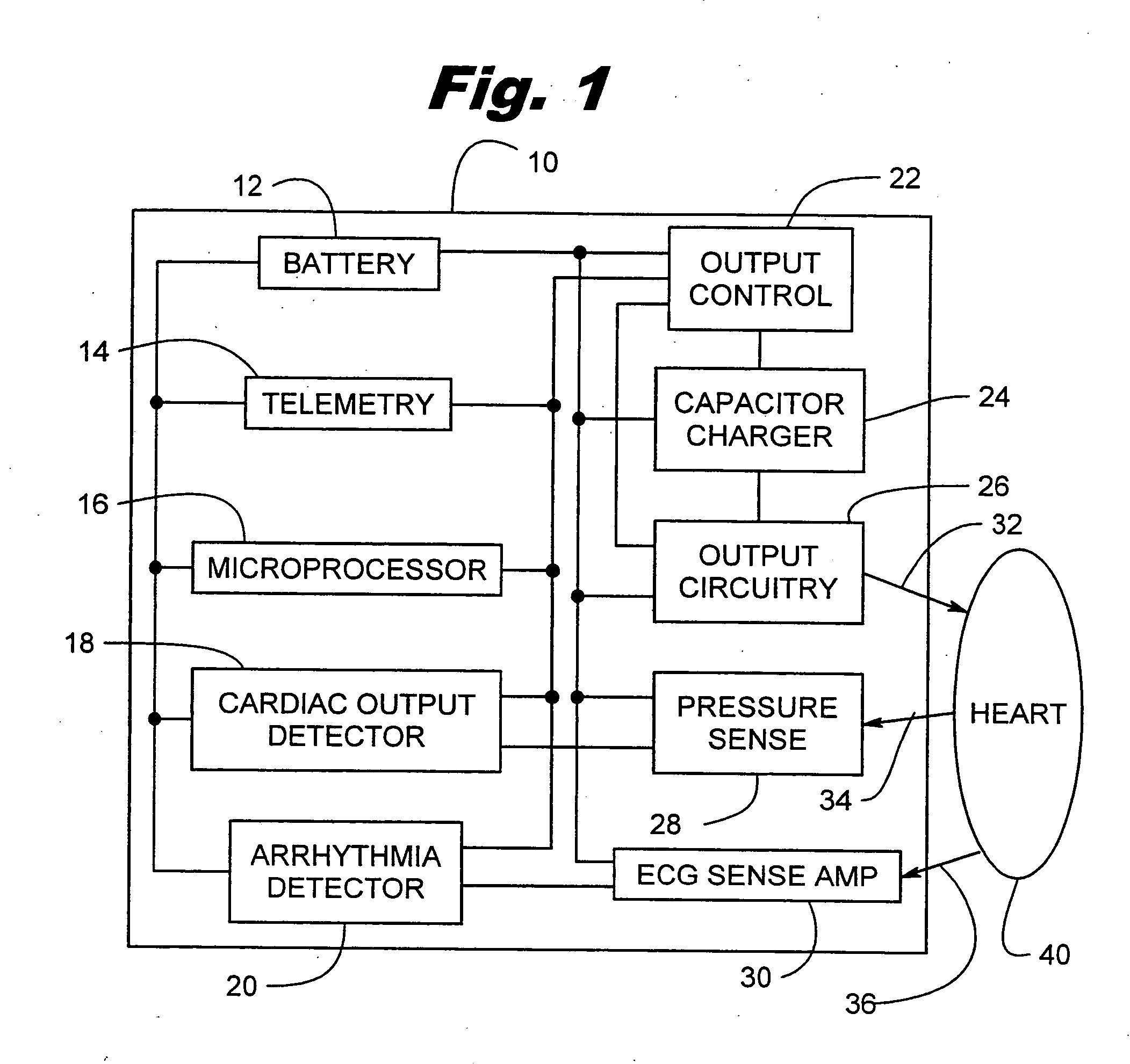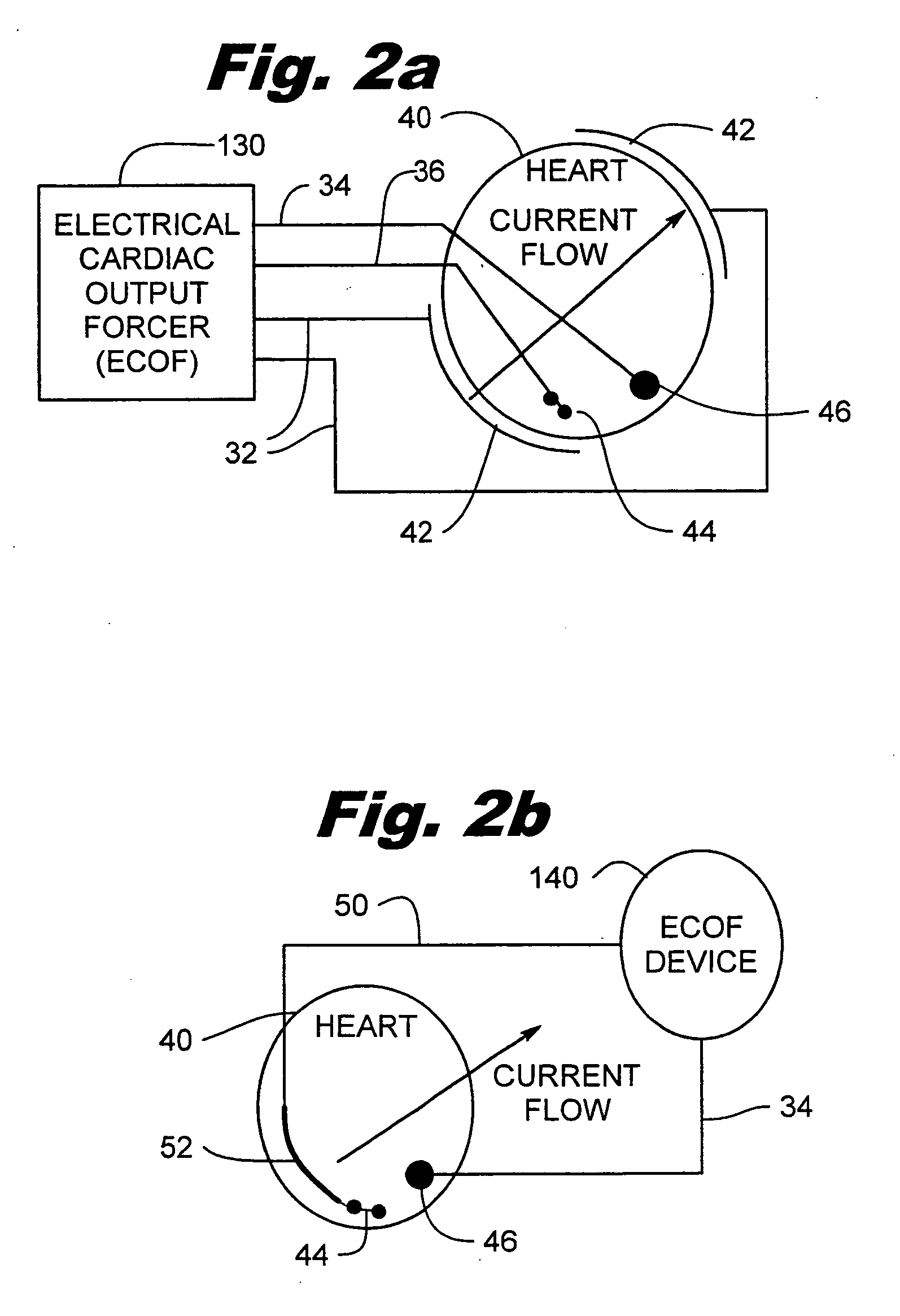Electrical cardiac output forcer
a technology of cardiac output and electric field, applied in the field of forcing cardiac output, can solve the problems of large icd, unpractical for a truly prophylactic device, and inability to respond quickly enough for paramedics, and achieve the effect of maintaining life and consciousness
- Summary
- Abstract
- Description
- Claims
- Application Information
AI Technical Summary
Benefits of technology
Problems solved by technology
Method used
Image
Examples
Embodiment Construction
[0026] The present invention will now be described more fully hereinafter with reference to the accompanying drawings, in which preferred embodiments of the invention are shown. This invention may, however, be embodied in many different forms and should not be construed as limited to the embodiments set forth herein. Rather, Applicants provide these embodiments so that this disclosure will be thorough and complete, and will convey the scope of the invention to those skilled in the art.
[0027]FIG. 1 is a block diagram illustrating a system 10 constructed in accordance with the principles of the present invention. The device circuitry is connected to the heart 40 via a series of leads; output lead 32, pressure sense lead 34, and ECG sense lead 36. The electronic circuit includes a conventional ECG amplifier 30 for amplifying cardiac signals. The amplified cardiac signals are analyzed by a conventional arrhythmia detector 20 which determines if an arrhythmia is present. The arrhythmia ...
PUM
 Login to View More
Login to View More Abstract
Description
Claims
Application Information
 Login to View More
Login to View More - R&D
- Intellectual Property
- Life Sciences
- Materials
- Tech Scout
- Unparalleled Data Quality
- Higher Quality Content
- 60% Fewer Hallucinations
Browse by: Latest US Patents, China's latest patents, Technical Efficacy Thesaurus, Application Domain, Technology Topic, Popular Technical Reports.
© 2025 PatSnap. All rights reserved.Legal|Privacy policy|Modern Slavery Act Transparency Statement|Sitemap|About US| Contact US: help@patsnap.com



